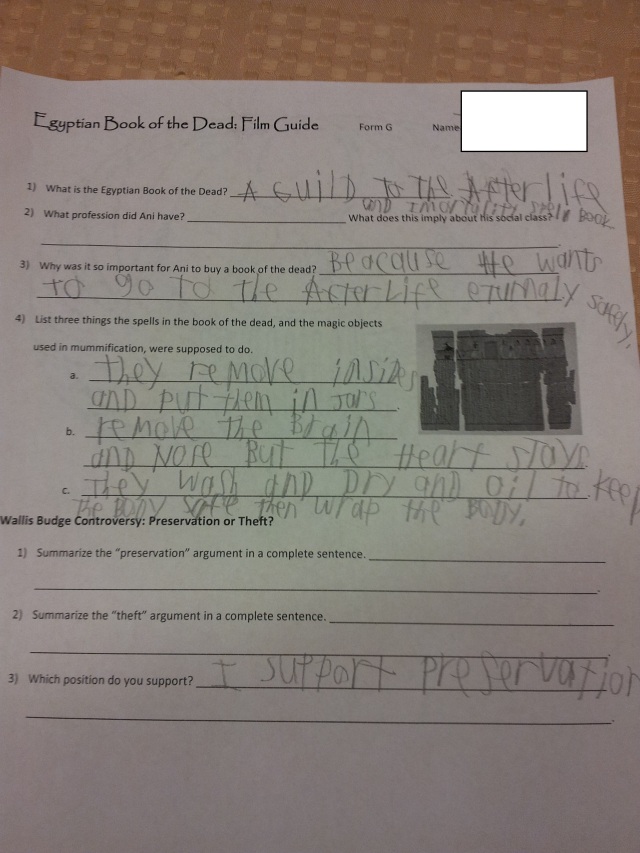H1 – Honor student diversity and development.
Teacher candidates plan and/or adapt learner centered curricula that engage students in a variety of culturally responsive, developmentally, and age appropriate strategies.
H1 means to me that a teacher has enough of an understanding of the needs and abilities of each student to make reasonable changes to enhance their curriculum. For most students this may not require actual changes to the content itself, but for others content may be inaccessible without differentiation. H1 means that the teacher acts on their knowledge of students to meet them where they are, in this case developmentally, in order to facilitate learning.
Recently I taught a lesson on the significance of the Egyptian Book of the Dead, and the ongoing controversy surrounding western powers taking historical artifacts from developing nations. The lesson made use of a documentary about the “preservation” or “theft” of antiquities from Egypt in the 1880’s. Students completed an information sheet as they watched and then argued the two positions promoting either the belief that taking these artifacts saved them from damage, or that taking the artifacts was predatory and an act of cultural theft.
The evidence below is the film guide given to the whole class. Following the film the students debated the two positions and then journaled a personal opinion supported by evidence, and an explanation of how they would argue their position to the other side.
You will see the complexity of questions ranging from simple fill-in-the-blank to analytic thought questions. These questions then fueled a great conversation among small group of students.
However, I have three very cognitively low students who do not have the developmental ability to follow the pace of the film, and struggle with higher level questions. Below you will see the modified information sheet I used with these students.
As you can see this student was able to stay engaged and was able to demonstrate his learning. His responses to the question asking for three examples of spells or amulets included in mummification, show that he misunderstood the question. But he shows he has learned a lot of good information about mummification itself. Considering his challenges I think this shows more than adequate learning for the day. Additionally this student was able to participate to a small degree in a small-group conversation. His contributions were limited but the level of his contribution to the group was above adequate given his challenges.
As pleased as I am with this attempt at differentiation I can identify a few areas that can still use growth and development for me. Even though the number of questions is reduced, there are still complex words that need to be adjusted. “Summarize,” “Imply,” and even “preservation,” may be complex enough words that they should be accompanied by brief definitions. That would also promote the learning of academic language as well. I also see that the final question on the modified sheet, which was designed to supplement inclusion in the larger group conversations, neglects to have a “why” question at the end. You will see that the student responds to the question but has no opportunity to explain his choice.
I plan on taking these lessons to heart when I craft future differentiated materials for these three students. I want to focus on a manageable amount of work for the pace of the students’ cognitive abilities, while also teaching academic language intentionally, and allowing for as much analytical thinking as they are capable of.

